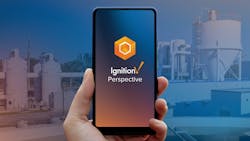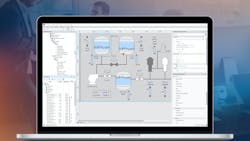SCADA systems in the 1980s and 1990s were designed for the traditional plant setup: operators using fixed monitors at their terminal or work stations scattered around the plant. Fast forward to today, and the “typical” plant setup looks very different, says Mike Crawford, vice president of operations for NLS Engineering.
“People don’t sit and operate in a terminal,” Crawford says. “It’s more common for an operator in a facility to be remote and need to monitor and control the facility from their phone, iPad or laptop.”
Demand for a mobile-first SCADA solution has grown with the rapid adoption of mobile technology in the industrial workplace. “That has been a desire for many years,” says Chris McLaughlin, SCADA and MES specialist for Vertech Industrial Systems. “Clients have always wanted to be able to view that screen on their phone and get it on the go.”
But until recently, no product existed that was truly mobile-first. Many SCADA visualization tools are built as a desktop application, says Travis Cox, co-director of sales engineering for Inductive Automation. Adapting a desktop application to mobile limits functionality for the user and makes customizing the application tricky, he says. “It can be a big uphill battle to climb if you’re not looking at a mobile-first application,” Cox says.
Rather than adapt to mobility, Cox says Inductive Automation built the first truly mobile-first SCADA solution. Their solution, the Ignition Perspective Module, can run on any major operating system, including natively on iOS and Android with their app. The application works on any device with a web browser, is fully HTML5 and CSS3 compliant and does not require Java installation or plug-ins. Perspective also works together with other Ignition modules like the Vision Module. A new version of Perspective for workstations will also be released soon.
“There are no other products out there that allow you to develop any kind of application that is pure-web, in HTML5, mobile-first and mobile-responsive,” Cox says.
McLaughlin has worked with the Ignition platform for the past decade and began working with Perspective when it was in its beta version. He says he uses Perspective now for all of his Ignition development, having completely transitioned from Ignition’s Vision Module. By using Perspective, McLaughlin says he can design screens more easily and efficiently regardless of their size or resolution.
“(With Perspective), I don’t even ask people what resolution this is going to be in. It doesn't matter, because it’s automatically doing it,” McLaughlin says. “Whether you have a giant screen or a laptop with terrible resolution, you don’t have to design screens differently. Everything is mobile-responsive no matter who the user is.”
In addition to offering a common user experience regardless of screen or device, a mobile solution allows users to leverage their mobile device’s sensors, including GPS. Bluetooth, camera, barcode scanner, touch gestures and accelerometer.
“It’s awkward to take a photo with your laptop, but it’s really easy to do with your phone or tablet,” McLaughlin says. “All of a sudden, service forms or maintenance-related stuff like trouble tickets and notes, you can include pictures with it. Related information and trends can all be auto-populated from a barcode scan.”
Operators can also send secure web links to the application that anyone can view in a web browser.
“Because everything is in a browser, it’s more natural and contained,” McLaughlin says. “A lot of times we’ll bring in map dials or bring in windy.com or weather.com as pages within the screen. Everything is URL driven. It acts like how someone uses the Internet. You can have someone navigate to a URL and go to the page directly that you want them to go to.”
To ensure systems are secure, Perspective was built with modern cybersecurity protocols, Cox says. Users can use a single sign-on with their existing corporate credentials to access all of their accounts and integrate Perspective with corporate identity infrastructures that use two-factor authentication.
“We want to make sure there are no barriers, that you can get data to everybody and know how to secure it and protect it,” Cox says.
The increased functionality leads to an improved experience for both the user and the designer, McLaughlin says. “For UX designers, there is a certain look and feel we are going for. If your system feels modern, users automatically think better of it, and user adoption goes better,” McLaughlin says. “From device to device, Perspective interacts with you and feels more intuitive as a user. It opens up everything that was available on your phone or tablet.”


